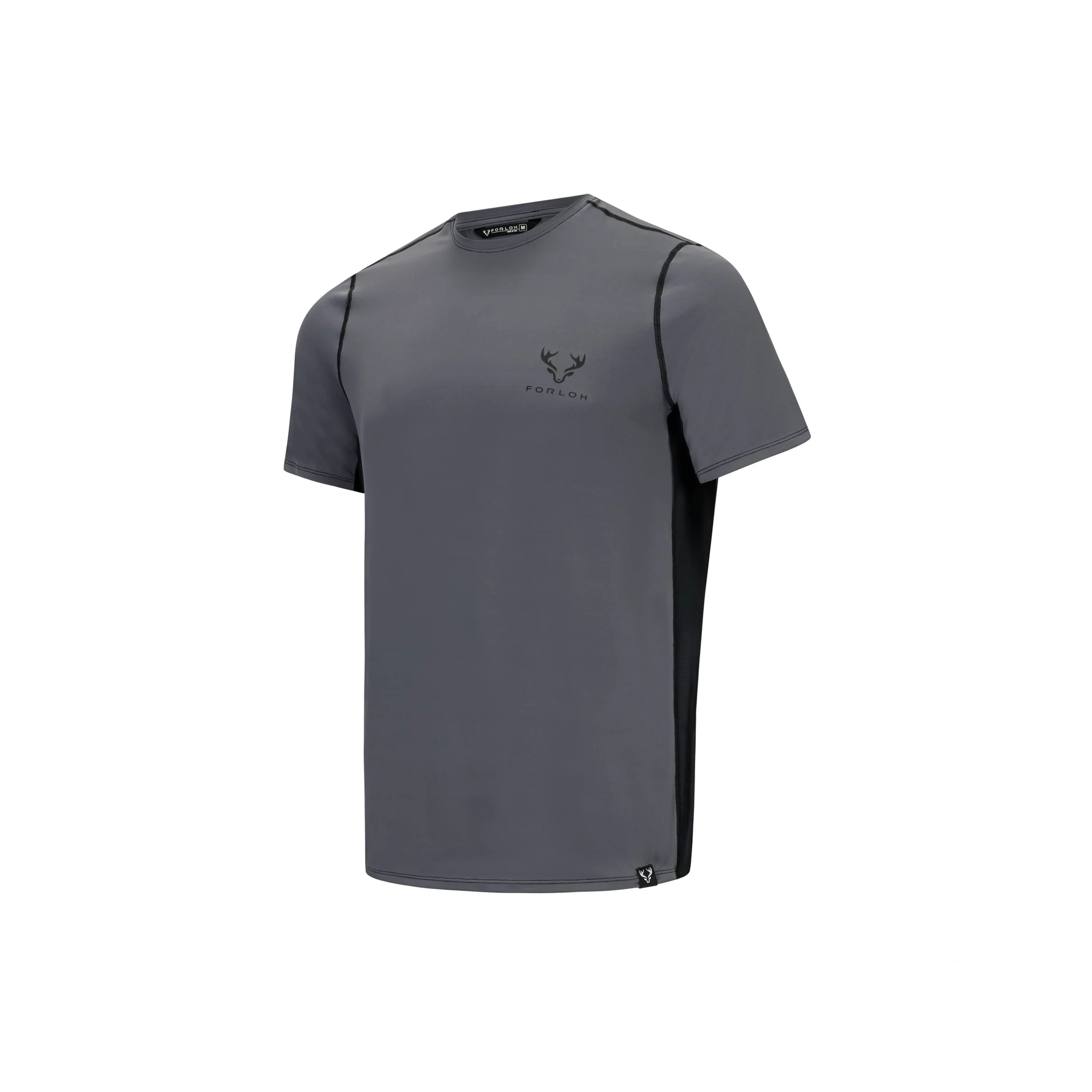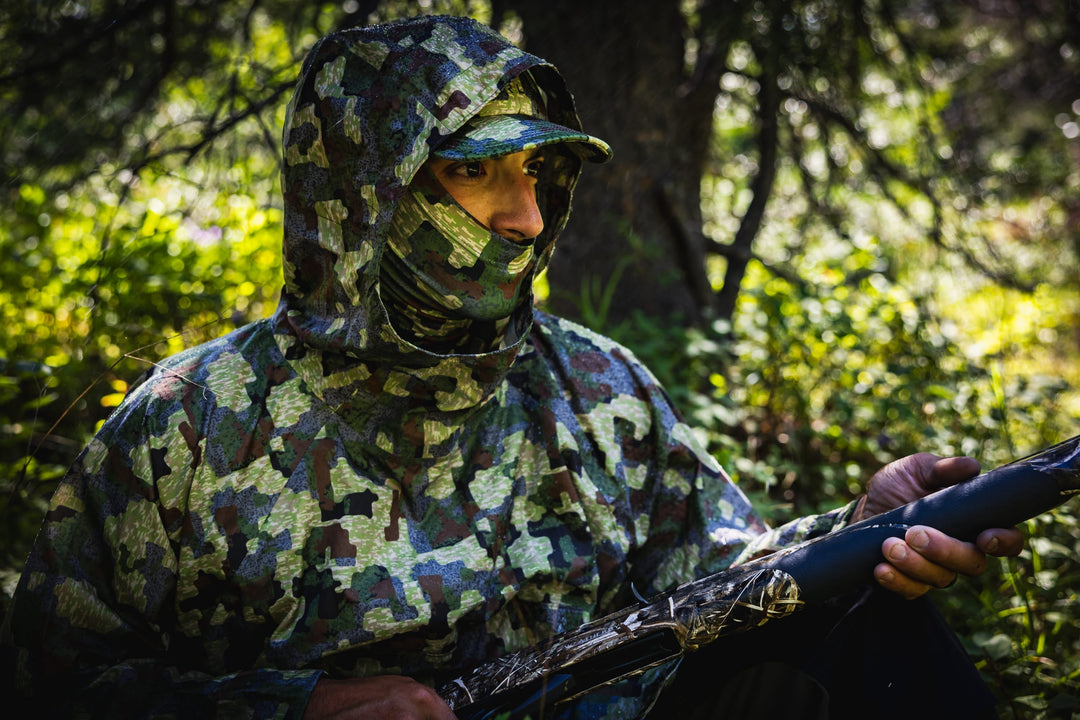Down jackets are a key part of any hunting layering system. Down is the lightest and warmest insulator you can find, but the type of down jacket you choose depends on what activity you plan to do in it—hunting, backcountry hiking, mountaineering, etc.—and the temperature. Down jackets can serve as insulating midlayers, everyday jackets, and heavyweight outerwear. Here’s everything you need to know about selecting the best down jacket for your hunting adventure.
|
Table of Contents |
What Is A Down Jacket?
Ducks and geese have a soft layer of down feathers under their main flight feathers that insulate them from cold and wet conditions. The down layer keeps them warm, while the thicker feathers on the outside provide a waterproof seal to keep the down underneath dry.
The highest quality down feathers don’t have an obvious quill but instead have a spherical appearance that offers a large amount of loft. Down clusters create millions of tiny air pockets. Your body heat warms up this air, which is then held in place by the down. The thicker the down is, the more warm air you can trap around yourself. This is why thick jackets, blankets, socks, etc. are warmer than thin ones.

Featured Gear: Women's ThermoNeutral Down Jacket
Down vs. Synthetic Down Jackets
Down is the most effective type of insulator. No synthetic fill can compare to its warmth, lightweight, compressibility, or longevity. Synthetic fill breaks down and loses loft every time you ball it up into a tight stuff sack.
Down-filled insulation is considerably warmer for its weight and compresses into a smaller package than synthetic-filled insulation. However, it loses its insulating properties when wet. If you’re caught in a downpour for an extended period of time, a down jacket will lose its loft, becoming a flat, soggy pile of feathers that can take days to dry out. Modern synthetic fills retain most of their puffiness even in very wet conditions.

Featured Gear: Men's ThermoNeutral Down Jacket
Pros & Cons of Down Insulation
Pros:
- Best warmth-to-weight ratio
- Longer lasting
- Highly compressible
- Very warm
Cons:
- More expensive than synthetics
- Loses loft when wet
- Can lose feathers through even small tears
Pros & Cons of Synthetic Insulation
Pros:
- Less expensive than down
- Insulates when wet
- Doesn’t leak out of small tears
Cons:
- Not as durable
- Doesn’t compress as easily or pack as small as down
- Lower warmth-to-weight ratio than down
Are Down Jackets Waterproof?
Down can be treated with DWR to repel water, which is then called hydrophobic down. DWR is similar to what companies apply on the outside of jackets to repel water.
FORLOH’s ThermoNeutral down line, including our down jackets and vests, features Activ-dri™ down, a treated down that repels water. This down stays dry three times longer and dries 33% faster when it does get wet. Activ-dri™ down reduces moisture absorption by up to 60% compared to untreated down.

Down Fill Power
Down fill power, or down fill ratings, refers to how much a certain weight or down lofts. Down with a higher fill power will use less weight of down to provide the same amount of loft/warmth. Thus, fill power indicates the relative quality of down. It doesn’t tell you how warm a jacket will be, because other factors, like the downfill weight, affect warmth.
Fill power also refers to how compressible a jacket is. A higher fill-power jacket that uses less weight of the filling will compress smaller than a jacket of the same warmth that uses more of a lower quality down fill. Higher quality down fluffs back up to create more loft after compression.
On the other hand, fill weight is the total amount of down in the jacket.
What To Consider When Buying a Down Jacket
There are several factors to consider when choosing a down jacket, and many depend on the climate and the outdoor activity for which you plan to wear it.
Warmth & Environment
The warmth you need from your down jacket depends on your activity level and the environment you’ll be in. For temperatures around freezing and higher, a lightweight down jacket should provide sufficient warmth and won’t make you too hot during activities like backcountry hiking, skiing, or snow goose hunting.
For everyday wear, you can opt for a less expensive lightweight down jacket not designed for the backcountry. For temperatures in the teens, midweight down jackets will boost warmth.
FORLOH’s ThermoNeutral Down Jacket is a great choice for daily use and hunting because of its breathability, packability, durability, and waterproof fabric. This jacket can also be used as an insulating midlayer as part of a layering system. It regulates your core body temperature in changing weather conditions so you never have to take it off. Layering hunting clothes is the best way to stay dry, comfortable, and warm.
For true winter conditions, you’ll need a heavyweight down jacket, which has the highest amount of down fill and at least 650-power fill down. Heavyweight down jackets also often feature weather-resistant shell fabrics, large hoods, and longer cuts for protection below the waist.
FORLOH’s Expedition Parka is fully seam-sealed, waterproof, extremely durable, and has 800+ fill power down.

Featured Gear: Men's Expedition Parka, Women's Expedition Parka
Packability
The ideal weight and packability of a down jacket are also closely related to the outdoor activity you plan to do since you don’t want to lug around a heavy jacket during intense exercise. Lighter jackets often have higher fill power down, making them highly packable. Heavyweight winter parkas won’t be packable, but they’re necessary for frigid winter conditions.
Durability
The durability of a down jacket depends on the fabric thickness and what you’re planning to use it for. Fabric thickness is measured in denier, or “D,” and the lower the number, the thinner the shell fabric. Ultralight jackets for long mountain hikes, under 15D, will be less durable. Everyday jackets should be about 20D to 30D.
FORLOH’s ThermoNeutral Down Jacket offers excellent durability, with 40D ripstop nylon fabric in a lightweight midlayer. The Expedition Parka offers unbeatable 70D fabric. Plus, our men's and women's down jackets and vests are covered by a lifetime warranty.
Sourcing & Sustainability
To ensure that the ducks and geese who supplied feathers for your jacket were treated ethically, look for companies that adhere to the Responsible Down Standard. The purpose of “traceable down” and “certified responsibly sourced” down standards is to provide transparency about where the down was sourced and eliminate inhumane practices like live-plucking and force-feeding.
FORLOH down pants and jackets are 100% made and sourced in the U.S. The down comes from American farmers and has a completely traceable supply chain.
Washing & Care
DWR-treated down repels moisture and dirt, so down jackets don’t need to be washed often, but if they get wet and don’t dry properly, they can develop an odor.
How to wash down jackets is slightly different than how to wash hunting clothes in general. But you should avoid bleach and detergents with UV brighteners and perfumes. You don’t want your prey to smell human odor, but you don’t want to mess with your camouflage or have them smell soap, either.
How To Wash a Down Jacket
If your jacket gets soaked or very dirty, you’ll want to wash it so the feathers can maintain their fluffiness. Use a down-specific detergent—no fabric softeners or bleach—and wash the jacket on a cold, gentle cycle. Down jackets shouldn’t be dry-cleaned.
How To Dry a Down Jacket
Be sure not to use your jacket while it’s wet, or it will dry unevenly and smell. Lay the jacket to dry for 24-48 hours, fluffing any wet clumps of feathers every so often. When it’s almost dry, put it in the dryer on low heat and frequently check it. This will fluff up the feathers.
Hood, Pockets & Other Features
Hoods, handwarmer pockets, and other features also influence the overall effectiveness of a down jacket. Hoods should expand to accommodate helmets or tighten to fit snugly over a beanie. If you plan to wear your down jacket for hunting, look for colors or camo patterns that will help you blend in with the terrain.
Zippered exterior handwarmer pockets are great for both warming your hands and protecting valuables, and they should be high enough on the jacket to use while wearing a pack waist belt or harness. Zippered interior chest pockets are another convenient feature.
Check out FORLOH’s cold weather hunting gear for every layer you need to brave the elements.








